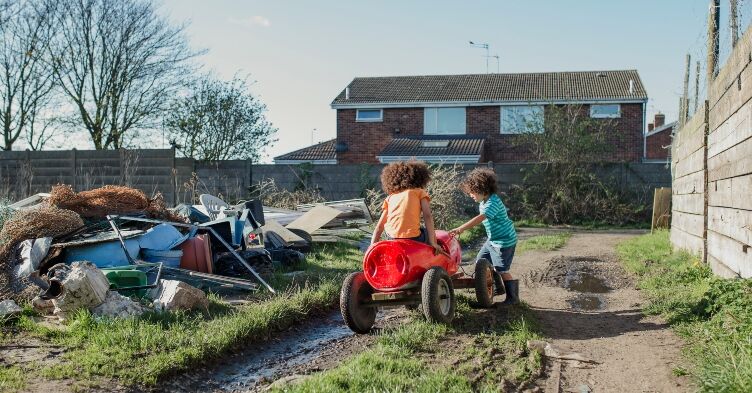Children in the most deprived areas of the UK face higher death rates as childhood poverty continues to rise, according to research.
A report, Addressing Poverty Update: UK Children Dying through Poverty, highlights how children from disadvantaged areas face a 13 per cent higher risk of death in paediatric intensive care than those from the least disadvantaged areas.
The work is the second report published jointly by Child of the North and the Centre for Young Lives, highlighting the negative impact that poverty has on many children’s education, health, and future employment prospects.
Related Article: Significant reduction in number of antibiotics prescribed, new data shows
The evidence-based plan focuses on addressing poverty with and through schools. It builds on the first report published in March 2024, which argues that schools and nurseries are ‘anchors’ in some of the most deprived areas of the UK, and should play a role in addressing poverty issues in these areas.
In 2023/24, nearly a third of children in the UK (4.5 million) were living in relative poverty after housing costs, with one million of these children based in the North of England. In some constituencies, such as Birmingham Ladywood, the figures are higher, with 62 per cent of children living in poverty. This report highlights how the situation is worsening, with researchers predicting that the number will rise to 4.8 million by 2029/30 if urgent action is not taken.
The researchers are calling for an end to The Government’s two-child benefit cap, which continues to drive hardship, forcing over 100 families a day into poverty. Families with a third or subsequent child born after April 2017 are excluded from an additional £3,514 per year in support. The report suggests that removing the two-child limit and subsequent changes to Universal Credit could improve the circumstances for 1.5 million children living in poverty.
The researchers state that schools ‘must be part of the solution’, emphasising the relationships that schools can have with communities and how this relationship can bring about change for children and families living in poverty.
Related Article: NHS App family access potential ‘gamechanger’ for practice staff
Liz Todd, Professor of educational inclusion at Newcastle University, who co-authored the report, said: ‘What is absolutely vital is that we see government action now on child poverty. Schools and charities are all doing so much to lessen the impact of poverty on children’s lives and our research shows even more is possible especially if children are involved in solutions.’
The report calls for more financial support for schools to take low-cost actions to help break the intergenerational cycle of poverty affecting children in the most deprived areas. Actions include measures such as increased pastoral care, employing family workers, extending school hours, offering breakfast and after-school clubs, enrichment activities, and holiday play schemes.
In addition, the researchers emphasise the importance of collaborating with children themselves, their families, and the broader community to address issues of childhood poverty.
Related Article: Severe pregnancy sickness raises risk of some mental health conditions
Professor Mark Mon-Williams, chair in cognitive psychology at the University of Leeds, who edited the report series, added: ‘This report lays bare the stark and shameful reality that children in the UK are dying because of poverty. It is simply unacceptable that a child’s postcode determines their chances of survival, health, and opportunity. But the evidence shows that change is possible. If we act with urgency and compassion, we can break the intergenerational cycle of poverty, support schools to become engines of opportunity, and ensure that every child has the chance to live a healthy, fulfilling life.’
